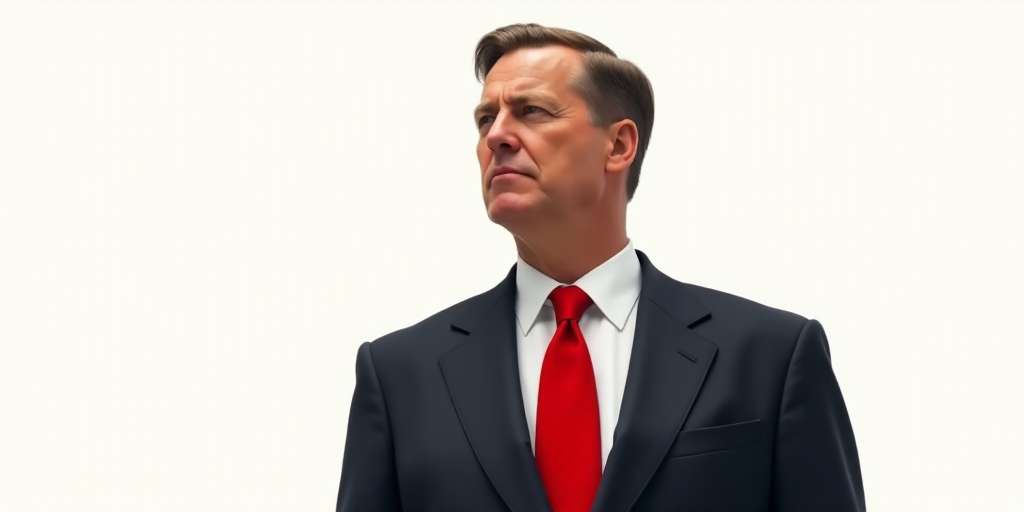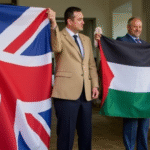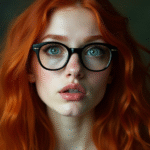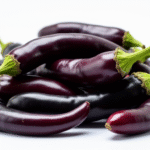Introduction
In the United States, there exists a unique tradition of commissioning official presidential portraits. The National Portrait Gallery in Washington, D.C., is responsible for selecting artists and arranging exhibitions, adhering to the rule that portraits should not be revealed until after the subject has left the White House. Currently, Barack Obama’s portrait is displayed, while Joe Biden’s and Donald Trump’s official portraits have yet to be unveiled. Trump’s portrait, created in 2017 by Washington Post photographer Matt McClain, presents a stark contrast to Obama’s portrait.
Trump’s Dramatic Portrait
McClain’s portrait of Trump is a dramatic high-contrast image, highlighting his golden hair, white shirt, and salmon-colored tie against a nearly invisible black suit blending with the background. The focus is on Trump’s piercing gaze, which conveys both authority and intimidation. This portrait aligns with Trump’s official image on the White House website, featuring an intense close-up where he stares directly into the camera with a chin-down posture, one eye squinted, and a scowl.
Comparing Trump’s Portraits
Trump’s portrait by McClain shares similarities with another photograph taken for Time magazine in 2019 by Pari Dukovic. Both images were displayed temporarily during Trump’s second inauguration period (January 13 to February 11). However, Dukovic’s photograph has notable differences that set it apart.
Captions and Descriptions
The accompanying texts play a crucial role in understanding these portraits. Dukovic’s photograph description subtly critiques Trump, mentioning his populist support and the refusal to accept the 2020 presidential election loss, leading to the January 6 Capitol attack by his followers. In contrast, McClain’s description presents a more positive account of Trump’s career, acknowledging his Republican primary victories and 2016 election win while omitting the Capitol insurrection.
Obama’s Serene Portrait by Kehinde Wiley
In stark contrast to Trump’s portraits, Obama’s painting by Kehinde Wiley presents a calm and humble demeanor. Seated with a relaxed posture, Obama gazes directly at the viewer amidst an enchanting dreamlike garden of leaves and flowers. The white hibiscus symbolizes his birthplace, Hawaii; Chicago cranes represent his upbringing and senate election; while African purple lilies signify his Kenyan father’s heritage.
Symbolism and Contrast
Unlike Trump’s portrait, Obama’s painting does not emphasize military power. Instead, it reflects his humility and commitment to combating climate change. Trump’s photograph by Dukovic, though also seated, differs significantly from Obama’s painting. Trump sits on a large leather chair in the Oval Office, emphasizing his military power through the displayed flags of five armed forces branches behind him.
Predecessors’ Influence
Trump’s portrait also features carefully selected predecessors’ portraits on either side. Andrew Jackson, like Trump, rose to power through populist and anti-establishment movements. Jackson signed the Indian Removal Act of 1830, paving the way for Native American forced relocation. Benjamin Franklin, known for his diverse career achievements, likely impressed Trump due to their shared multifaceted nature.
Interpreting the Military Symbolism
While military symbolism in Trump’s portrait may suggest a leader’s insecurity, it’s crucial not to overlook his ongoing declarations of war—trade, cultural, immigration—which could lead to unwanted military escalation.
About the Author
Vanessa Badré, an American University professor, lawyer, and art historian specializing in analyzing artworks to explore broader social and economic themes.
Key Questions and Answers
- What is the unique tradition in the U.S. regarding presidential portraits? In the United States, there is a tradition of commissioning official presidential portraits, managed by the National Portrait Gallery in Washington, D.C., which reveals portraits only after the subject has left the White House.
- How do Trump’s and Obama’s portraits contrast? Trump’s portrait by McClain is dramatic and emphasizes military power, while Obama’s painting by Kehinde Wiley is serene and connected to nature, reflecting humility and commitment to climate change.
- What do the accompanying texts convey about these portraits? The captions and descriptions offer contrasting narratives of Trump’s career, with Dukovic’s photograph subtly critiquing his actions and McClain’s presentation focusing on his achievements.
- What symbolism is present in Obama’s painting? Obama’s painting features a dreamlike garden with flowers symbolizing his birthplace, upbringing, and Kenyan heritage.
- How do Trump’s portraits differ from Obama’s? Unlike Obama’s painting, Trump’s portraits emphasize military power and are set in the Oval Office, contrasting with Obama’s serene and nature-connected demeanor.






